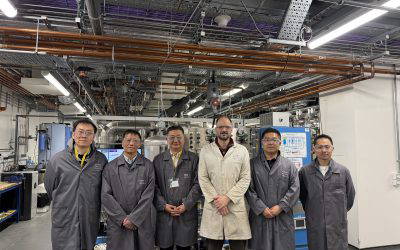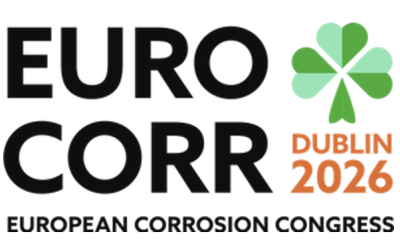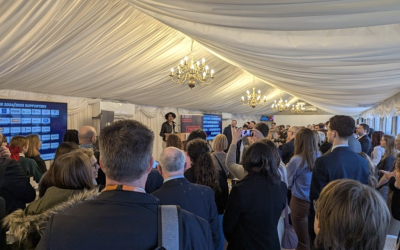The 65th Corrosion Science Symposium (CSS) was again held jointly with Electrochem2024 at Manchester Metropolitan University between the 11th and 13th September 2024.
The symposium is always an opportunity for students and early career researchers in corrosion science from across the UK and Europe to congregate, discuss their work, share ideas and, above all enjoy themselves in a stimulating/friendly environment. This year there were 19 talks and thirteen posters, and the UR Evans award plenary talk given by Prof David Shoesmith (University of Western Ontario, Canada).
Prof Shoesmith’s research has focused on the application of electrochemical techniques, oxide/sulphide film properties, microscopic examination of the evolution and spatial
distribution of corrosion damage on a wide range of materials including copper, steels, and titanium and nickel alloys, and
the development of computational models for corrosion processes with a special emphasis on the corrosion of uranium dioxide (nuclear fuel) and nuclear waste container materials (copper, titanium and nickel alloys) under permanent waste
disposal conditions.
This year marks the centenary for the first publication of Corrosion of Metals by Ulick Richardson Evans in 1924. UR Evans is described as the father of the modern science of corrosion and protection of metals. His major contribution to the subject involved placing on a firm foundation the electrochemical nature of corrosion. As such, Prof Shoesmith’s plenary entitled Corrosion of the Spent Fuel Waste-form and Engineered Barriers in a High-Level Nuclear Waste Repository was a very fitting commemoration. He described the various intricate electrochemical investigations into the possible long-term corrosion processes within Canadian/Swedish/Finnish a deep, geological repositories. A number of key processes were addressed: (i) the evolution of exposure conditions and its effect on corrosion of the copper/steel (or iron) container corrosion barrier: (ii) the potential for hydrogen absorption by the already hydrided Zircaloy fuel cladding, and whether this rendered it an unacceptable barrier to radionuclide release if container failure occurs: (iii) the corrosion response of the spent fuel (uranium dioxide containing fission products and actinides produced in-reactor) to the evolving redox conditions inside a failed container, which will be determined by the conflicting influences of water radiolysis and the products of steel (or iron) corrosion.
This year the Shreir prize, for the best student presentation at the CSS, went to Amber Sykes (University of Leeds) for her talk entitled investigating the Influence of Porous FeCO3 Layers on the CO2 Corrosion Rate of Carbon Steel. Amber’s talk superbly described, with high level critical insights, the influence of high temperature and pressure carbon dioxide saturated environments and the of FeCO3 corrosion products on pipe walls that form dense protective layers. Utilising both experimental and numerical studies Amber assessed influence of the FeCO3 layer’s porosity and thickness on the predicted corrosion rate of the underlying carbon steel surface. A key finding was the relationship between the physical properties of FeCO3 and the protectiveness of the layer, which were also investigated using a variety of ex situ analysis techniques.
Other symposium highlights included: Alyshia Keogh (University of Manchester) gave an interesting overview of her work on the effect of aging temperature and chloride concentration on the atmospheric stress corrosion cracking of 15-5PH stainless steel. She reported that cracks found in samples aged at 450°C were intergranular whilst in samples aged at 540°C a mixed mode intergranular and transgranular mechanism was predominant. It was shown that aged 15-5PH at lower temperatures may be more susceptible to hydrogen embrittlement or that inherent mechanical properties make them more susceptible to cracking once pitting initiated.
Also, Ethan Proudlove’s (University of Leeds) presentation on the Application of Machine Learning to the Prediction of CO2 Corrosion Rates in Geothermal Systems is another honourable mention. He presented an investigation into machine learning as a tool to combat these limitations, with the aim of developing a model to emulate and improve industry applications of the existing COMSOL modelling undertaken at Leeds.
Please contact Julian Wharton should you wish to be involved in any future Corrosion Science Symposium activities: j.a.wharton@soton.ac.uk
Other symposium highlights included: Alyshia Keogh (University of Manchester) gave an interesting overview of her work on the effect of aging temperature and chloride concentration on the atmospheric stress corrosion cracking of 15-5PH stainless steel. She reported that cracks found in samples aged at 450°C were intergranular whilst in samples aged at 540°C a mixed mode intergranular and transgranular mechanism was predominant. It was shown that aged 15-5PH at lower temperatures may be more susceptible to hydrogen embrittlement or that inherent mechanical properties make them more susceptible to cracking once pitting initiated.
Also, Ethan Proudlove’s (University of Leeds) presentation on the Application of Machine Learning to the Prediction of CO2 Corrosion Rates in Geothermal Systems is another honourable mention. He presented an investigation into machine learning as a tool to combat these limitations, with the aim of developing a model to emulate and improve industry applications of the existing COMSOL modelling undertaken at Leeds.
Please contact Julian Wharton should you wish to be involved in any future Corrosion Science Symposium activities: j.a.wharton@soton.ac.uk
Presentation of an Engraved Sword was Made to Prof. David Shoesmith by ICorr President
Stephen Tate.
Amber Sykes
PhD Student – University of Leeds.
Amber Sykes
PhD Student – University of Leeds.
Ethan Proudlove
MSc in Aerospace Engineering at University of Leeds.
Alyshia Keogh PhD Student with Airbus at
The University of Manchester.



